Aliens In The Multiverse? Here’s Why Dark Energy Doesn’t Tell You Anything
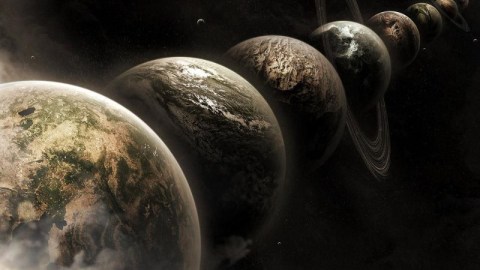
If dark energy were stronger or weaker, everything would be pretty much the same. And that’s a puzzle.
After the Big Bang, the Universe was full of matter and radiation. It expanded and cooled, and over millions and even billions of years, the overdense regions attracted more and more matter into them, eventually forming stars, galaxies, and clusters of galaxies. A few billion years ago, a new form of energy — dark energy — became important in the Universe, and pushed the distant galaxies and clusters away, causing them to accelerate. One of the greatest puzzles in physics is where this dark energy came from, and why it has the value that it does.
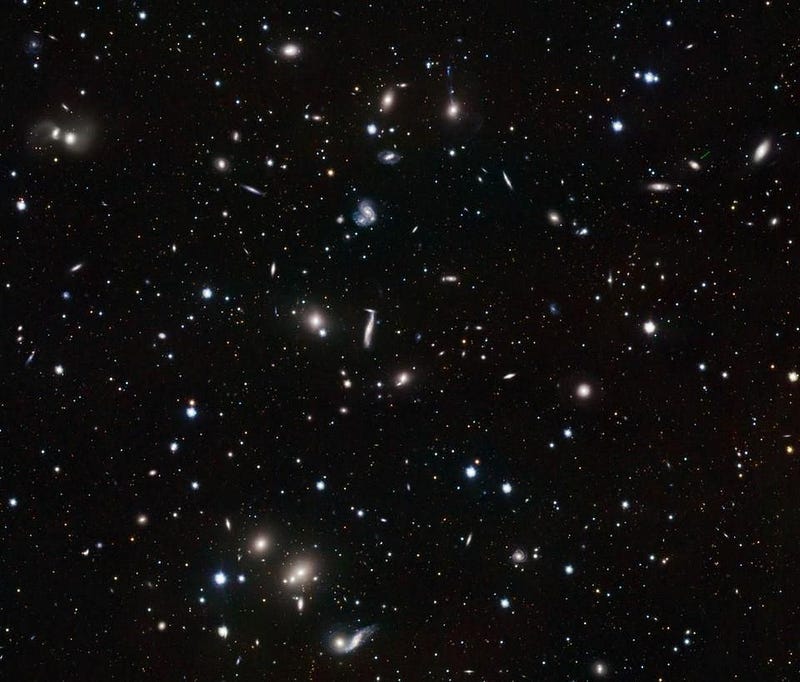
If dark energy were a lot stronger, the Universe would have been driven apart not only before the first stars and galaxies formed, but even before the first stable atoms could form. If it were stronger in the opposite (negative) direction, the Universe would have recollapsed before anything interesting could have formed. The fact that dark energy is as weak as we observe it to be is one of the greatest cosmic coincidences of all, and one that’s seemingly necessary for our existence.
In a series of new papers, however, this fine-tuning problem is shown to be less severe than previously thought. It turns out that dark energy might not matter very much at all for allowing life in the Universe.
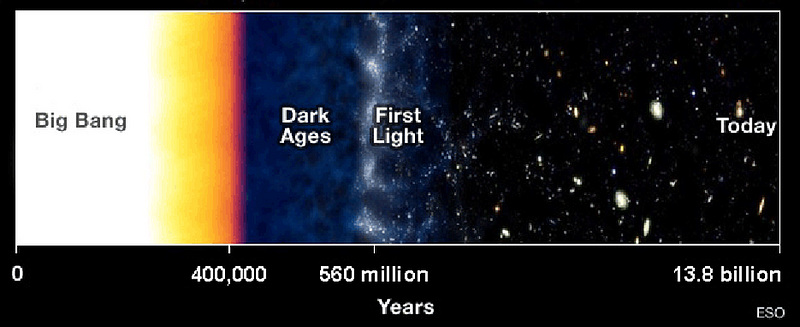
The dark energy puzzle goes back to 1987, when Nobel Laureate Steven Weinberg wrote a now-famous paper showcasing how small and finely-tuned the cosmological constant would need to be to allow stars, galaxies, and other gravitationally bound states. The argument goes like this:
- The value of a cosmological constant in our Universe could, in principle, take on any positive-or-negative value.
- If you try and calculate an estimate based on fundamental constants, you get a (mass)4, where the mass, made out of a combination of the constants G, c, and ħ, is ~10¹⁹ GeV/c².
- But if the value of dark energy is greater than ±(10^-8 GeV/c²)⁴ or so, you get a Universe that either recollapses (for -) or is driven apart (for +) before any stars or galaxies can form.
- Therefore, we must live in a special place, for the Universe to be so finely tuned.
Although this is the commonly-accepted perspective on dark energy for the past 30 years, there are both theoretical and observational reasons to challenge it.
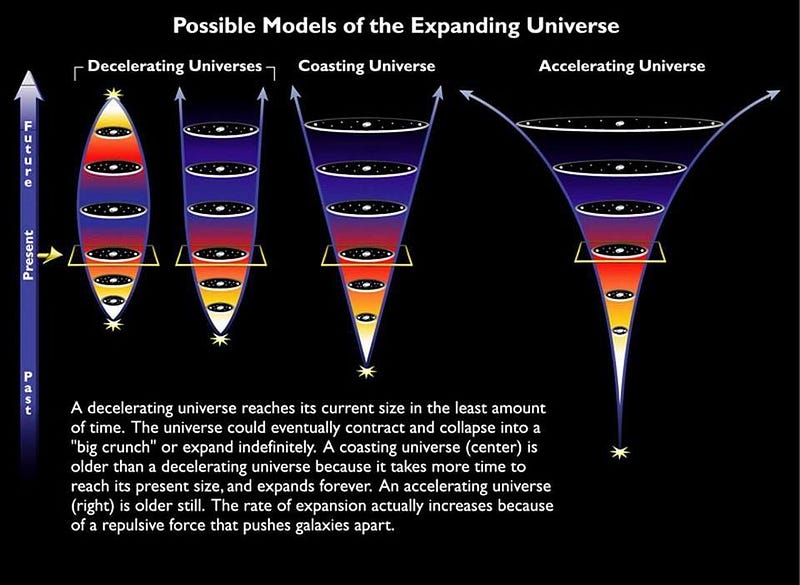
Theoretically, we know that it’s demonstrably naive and foolish to assume that combining the fundamental constants gives you a good estimate for the physical, observable properties of the Universe. That same mass value, 10¹⁹ GeV/c², is often cited as the expected masses of the Standard Model particles, which range from 0.0005 GeV/c2 (the electron) to ~175 GeV/c² (the top quark): a tremendously small set of values when compared to what you might expect. Clearly, there is more at play in determining the values of masses and energies — even of dark energy — in the Universe than just combining fundamental constants.
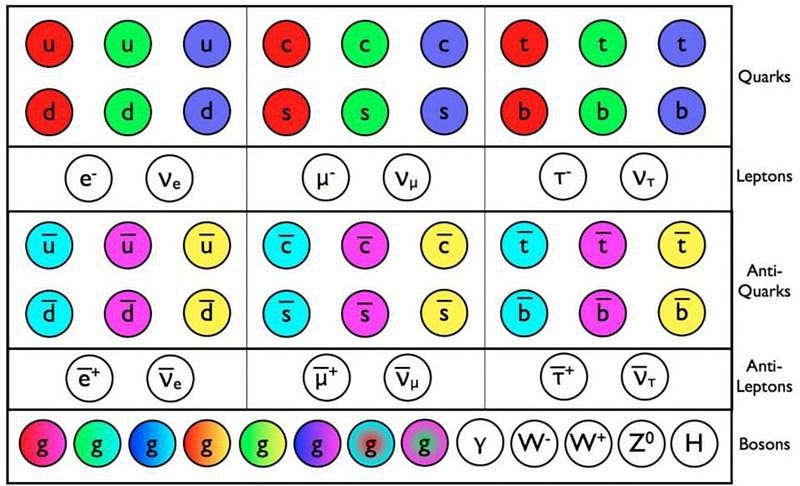
Observationally, we know the value of dark energy in our Universe corresponds to a value that’s approximately 120 orders of magnitude smaller (a factor of 10^-120) than this “expected” value. This corresponds to a value of +(10^-11 GeV/c²)⁴, which just coincidentally happens to equal the observed masses of the neutrinos in our Universe. (There is strong speculation that these two phenomena may be related.) But what’s interesting is that if that value were higher by about a factor of 10 or 100 — or lower by an arbitrary amount — the overall Universe itself would hardly change at all.

That’s the whole point behind the new research which states that the Multiverse might be hospitable to alien life, after all. In the new two papers just published, scientists simulating how stars, galaxies, and other structures form in the Universe have demonstrated that even increasing the amount of dark energy by a factor of three, ten, or even fifty will only change the number of stars you form by about 15%. Once the value of dark energy drops below a certain critical threshold, your Universe suddenly becomes very friendly to the same cosmic story that brought human beings into existence.
So long as you can still form gravitationally bound clumps of matter, you’ll still get a similar cosmic story to what’s unfolded in the Milky Way. You’ll still form stars, which will still burn through their fuel and die, creating heavy elements, that can then get recycled into future generations of stars. These later stars can form rocky planets around them, complete with organic molecules and chances for life. Even in a Universe with much stronger amounts of dark energy, there are still chances for life.
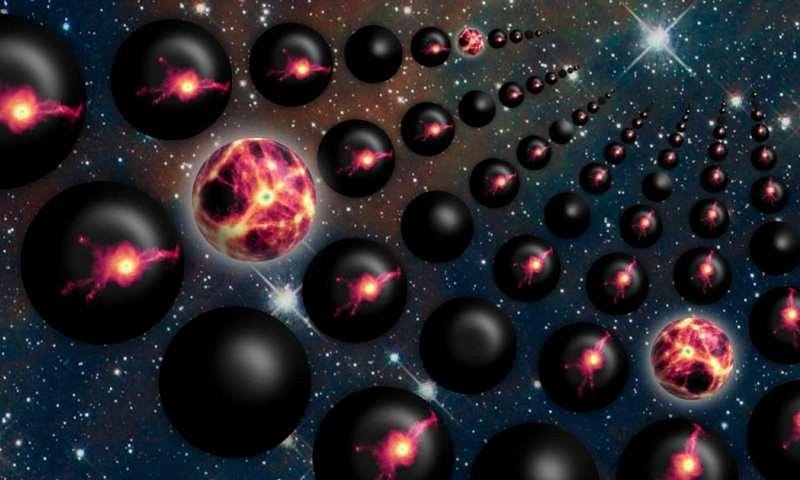
The whole reason people assume a life-friendly Universe in the Multiverse is rare is because they assume that values of dark energy based on a large, Planck-scale mass (close to 10¹⁹ GeV/c²) is likely, and a finely-tuned version that’s many orders of magnitude lower (like 10^–11 GeV/c²) is rare. But the scientific truth may be far more sobering: we don’t know what causes dark energy to have the value it does. It could be that it varies dramatically from Universe-to-Universe within the Multiverse, or it could be that dark energy has the same values in all iterations of Universes within the Multiverse. It could vary a lot, or it could vary very little, if at all. This depends very strongly on properties of nature that we do not yet understand how to measure.
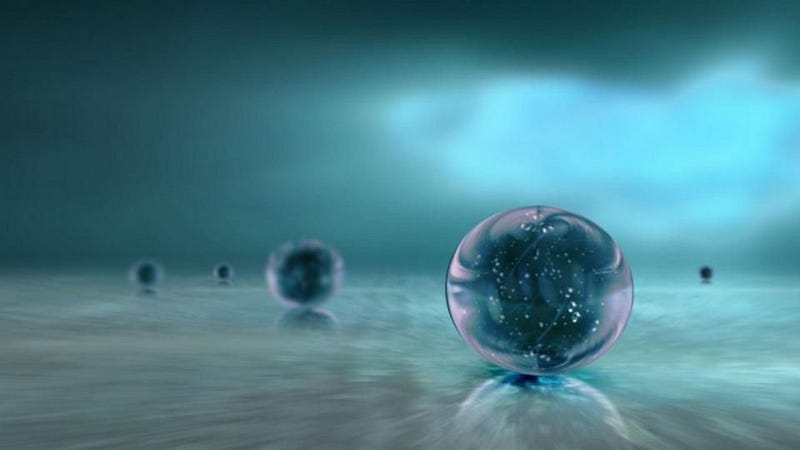
If dark energy could literally take on any value at random, then perhaps our Universe is extremely finely-tuned. But if there are any dynamics governing it, and in physics, we always suspect that there should be, then we can’t say anything meaningful about what we observe versus what we expect. According to Jaime Salcido, lead author on one of the new papers:
Our simulations show that even if there was much more dark energy or even very little in the Universe then it would only have a minimal effect on star and planet formation, raising the prospect that life could exist throughout the Multiverse.
It’s important to recognize that there are a wide variety of possible values that dark energy could have, including significantly larger values, that would still lead to a Universe very much like our own. Until we understand where these values come from, and what makes one set of values more likely than another, it’s grossly unfair to claim that we won the cosmic lottery in having a Universe with the values ours possesses. Unless you know the rules that govern the game you’re playing, you have no idea how likely or unlikely the one result you see actually was.
Ethan Siegel is the author of Beyond the Galaxy and Treknology. You can pre-order his third book, currently in development: the Encyclopaedia Cosmologica.





